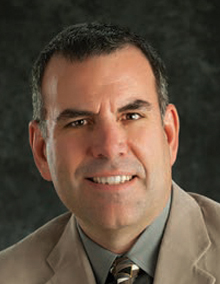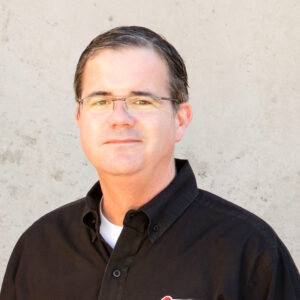Spring into action with MAX USA Corp.’s Exciting Tool Promo
Plainview, NY (March 7, 2024) – As the season blooms, MAX USA Corp. is thrilled to unveil an exclusive promotion crafted to supercharge your toolkit. From March 1, 2024, to April 30, 2024, gear up with MAX’s acclaimed SuperFramer®, SuperRoofer®, and SuperLocator® —all at discounted rates, topped with a FREE Tumbler with every purchase.
Discover unbeatable pricing on our premium lineup, including the SN883RH3, SN890CH3/34, SN883CH2/28, CN445R3, and SN438), available at our trusted dealer network. Renowned for their top-notch quality and performance, these tools are now more accessible than ever. Plus, for a limited time only, while supplies last, enjoy a complimentary MAX Tumbler with every tool purchase.
MAX remains steadfast in its mission to equip industry professionals with top-tier solutions while providing unwavering support to dealers and contractors with state-of-the-art gear. This exclusive offer highlights MAX’s commitment to innovation, excellence, and the success of its valued customers. Do not miss this unique chance to refresh your tools and gear for the dynamic spring season ahead.
All MAX products are protected by registered patents and design rights including trademarks. For details, please contact MAX.
About MAX USA Corp.
MAX USA CORP., a subsidiary of Tokyo-based MAX Co., Ltd., is a worldwide leader in the manufacturing and distribution of professional grade power tools and accessories. For over 80 years MAX has utilized its expertise and ingenuity to manufacture and distribute the highest-quality tools that include pneumatic nail guns, staplers, compressors, the first battery operated and stand-up rebar tying tools, fasteners, and tie wire, including Buy America Certified. Headquartered in Plainview, NY, MAX USA is part of a vast network of MAX locations that employs more than 2,000 people worldwide, including 200 R&D engineers. For more information, please visits us at www.maxusacorp.com.
Follow MAX USA on Instagram, Facebook, LinkedIn, and Twitter
Fall Board Meeting Highlights
 I trust this letter finds you well and thriving. As we approach the end of another successful year, I am delighted to share some highlights from our recent Fall Board Meeting, which was held in beautiful Oklahoma City. The gathering served as a powerful reminder of the strength and camaraderie that defines the Concrete Foundations Association.
I trust this letter finds you well and thriving. As we approach the end of another successful year, I am delighted to share some highlights from our recent Fall Board Meeting, which was held in beautiful Oklahoma City. The gathering served as a powerful reminder of the strength and camaraderie that defines the Concrete Foundations Association.
The meeting, with its customary agenda covering various financial and business topics, was insightful and productive. However, what truly ignites my passion for being a part of this association is the opportunity to engage in deep discussions on how we can continually enhance the value we provide to our treasured members.
The true essence of our association, though, lies beyond the boardroom discussions. It is when we immerse ourselves in the environments of our local contractors, witnessing firsthand the dedication, innovation, and excellence they bring to their craft. This year was no exception, and I am pleased to share the profound impact our visit had.
A special note of appreciation goes out to Mike Hancock of Basement Contractors, who graciously opened the doors of his business to us. The hospitality extended to our members and the willingness to share insights into his operations allowed us to gain valuable perspectives. The tour of his shop, office, and jobsites left a lasting mark, underscoring the high caliber of the professionals who make up our association.
These interactions with local contractors not only strengthen the bonds within our community but also provide a platform for mutual learning and growth. It is through these experiences that we deepen our understanding of the challenges and opportunities faced by our members, fostering a spirit of collaboration that sets us apart.
Looking ahead, our association remains committed to exploring new avenues, initiatives, and partnerships that will further elevate the CFA community. Your input and engagement are vital as we continue to chart the course for our shared success.
As we reflect on the impactful moments of our recent meeting and the invaluable connections made, I am energized by the collective strength of our association. Together, we will continue to build a foundation for excellence and innovation in the concrete industry.
Thank you for your unwavering commitment to the Concrete Foundations Association. I look forward to the continued growth and success we will achieve together. I hope to see you soon at our Winter Social in Las Vegas.
Warm regards,
Jason Ells
Custom Concrete Company Inc.
The Challenge of Time

James Baty
jbaty@cfaconcretepros.org
The calendar is telling me it is December, and I’m still trying to convince myself it can be true. How is it that 2023 is nearly over, and by the time you are reading this, 2024 has likely arrived? I hear this in nearly every conversation where I get the chance to catch up with others. Surely, time can’t speed up; surely, we aren’t missing blocks of time, and my age isn’t catching up with me, leaving gaps in my remembered timeline.
The reality is, like most of you, I am measuring time in much smaller intervals or projects. My comprehension of time today looks much different than it did when I measured time based on the length of a baseball game or fishing in a pond. I get a little bit of that old pace back each time I find myself in a stream, tossing a fly into a run, or when I settle into the combination of that beach chair and a good book. The challenge then becomes: how can I (we) recapture the value of time while maintaining the productivity necessitated by our present life?
Part of what speeds up that clock is the intentional way this association is put together and run. There are quarterly meetings with the Board of Directors, monthly meetings with the Executive Committee, and semi-monthly meetings with Board task forces, striving hard to set the stage for productivity and revenue empowerment for the future. Add to these weekly meetings with the CFA president and daily strategy sessions with our staff and (like the way your business runs), the CFA is filled with time-marked intervals that quickly snap forward through the days, weeks, months, and years.
Working with current CFA president Jason Ells, whose letter in this issue does a great job reflecting this association’s energy, I have come to realize the power behind the phrase, “you can’t improve what you can’t measure”—one he has become known
for across these meetings. Measuring is built into our human nature; measuring is common sense; measuring is also a burden. Yet, measuring is the tool most need and unfortunately is most overlooked. By this I mean, the hardest aspect of your business and likewise this association has to do with the measurement tools we use to understand the needs of clients and members.
I get distracted by the low-hanging fruit and the squeaking wheel, those things that pop up regularly but are not central to my work. Yet, there is a much larger picture out there I need to remember, the one that shows the impact this Association can have, and reminds me of the potential of reaching many more customers who need our skills. Let’s work on this together. The CFA needs more of you engaging, contributing, and taking. In so doing, your capacity to reach and serve, and thereby receive, will be increased as well.
Are you up for the challenge?
Introducing the New CFA Board: Bromley, Jordan and Zamora join during CFACON23
An organization’s Board of Directors is a valuable part of building professional leadership and legacy. The aspect of giving back to the industry through this leadership is balanced with the technical and professional advantages gained from serving so closely with others. This holds true for the Concrete Foundations Association, where the Board is currently comprised of people from varying backgrounds and various places—there are fourteen concrete contractors, a technical consultant, and three business leaders from the manufacturing and distribution industries.
Established in 1975 by charter, the CFA has seen a rich collection of visionary leaders with extensive experience over these 48 years. The industry has been represented by contractors from both coasts, from two countries, from thirty-five states, and from every aspect of the cast-in-place concrete industry. “While the staff performing the daily functions and implementing the strategies ensure the association is on target and achieving results, we must maintain a true connection to the mission and vision established for the membership,” said executive director, James Baty. “I stepped into this role after a decade of observing the symbiotic relationship with the Board curated by my partner, Ed Sauter. During this time, I came to know the incredible passion held simultaneously for family, company, industry, and association. The humility to serve selflessly and invest in the association has reaped a surprising return on that investment with every Board member with whom I have worked.”
During Concrete Foundations Convention, or CFACON23, in San Antonio, Texas, this past July (July 17-19), the association gathered to install the latest participants elected to serve on the Board of Directors. Each elected for three-year terms, Mike Bromley of ABI Corporation in Lee’s Summit, Missouri; Nate Jordan of Stephens and Smith Construction in Omaha and Lincoln, Nebraska; and Johnny Zamora of Form-A-Drain in Houston, Texas, are now settling in to the work to which they are called to contribute.
 Mike Bromley
Mike Bromley
Chief Executive Officer ABI Corporation,
Lee’s Summit, Missouri
Mike Bromley is the latest distinguished figure and family member to steer ABI Corporation in Lee’s Summit with a legacy deeply rooted in family and innovation. As the chief executive officer, Mike builds upon the strong foundation laid by his father, Gary Bromley, who pioneered the family business. Gary’s entrepreneurial spirit and dedication to quality laid the groundwork for ABI Corporation’s reputation as a reliable and cutting-edge technology solutions provider. Gary was a past president of the CFA (1995-1996) where Mike and his brother Dan grew up with a tethered passion for the company and the association. “My earliest memory of the CFA was one time when our father extended a CFA meeting and we hiked the Appalachian Trail when I was a teenager,” Mike said.
Notably, the Bromley legacy extends beyond Mike, with his brother, Dan Bromley, also having served as a past president of the CFA (2008-2010). Together, Mike and Dan have seamlessly blended their expertise, with each contributing to the success and growth of both ABI Corporation and the broader construction industry. Their collaborative efforts have not only solidified the family business’s standing but have also left an enduring impact on the professional organizations they have been involved in.
Under Mike Bromley’s leadership, ABI Corporation continues to evolve, staying at the forefront of technological advancements. Mike’s commitment to innovation aligns with the Bromley family tradition of excellence, ensuring ABI Corporation remains synonymous with forward-thinking solutions. As we delve into Mike Bromley’s story, we unravel the intricate tapestry of a family-driven legacy, where the values instilled by his father and the collaborative efforts with his brother have shaped ABI Corporation into a beacon of success in Lee’s Summit and beyond.
As Mike begins his first term on the Board, his goal is to continue learning and sharing. “Together, when we commit to sharing and being open to learning, what we produce is a broader base of support for others in this field,” Mike said. “I want to continue moving the company and this association into the future in technology, leadership, and culture.”
____________________________________________________________________________________________
 Nathaniel Jordan
Nathaniel Jordan
Project Manager
Stephens and Smith Concrete Construction Inc.
Nate Jordan is currently one of the residential project managers for Stephens and Smith Concrete Construction of Omaha and Lincoln, Nebraska, serving their Omaha division. He is a seasoned construction professional and a second-generation member of the CFA Board, following in the footsteps of his father, Lance Jordan (2005-2011). As part of the Stephens and Smith family, Nate contributes to the company’s legacy of excellence, which dates back to its establishment in 1971. “I believe my first memory of the CFA was around 1994,” Nate said. “I was 13 at the time. The conference that summer was in Jackson Hole, Wyoming. My dad decided to bring the whole family to the event and then take us on vacation in Yellowstone afterwards. I do not remember much of the conference itself but do remember thinking how awesome it was that we were able to travel with my dad for a work event!”
Specializing in residential and commercial flatwork, foundations, decorative concrete, and specialty products, Stephens and Smith has become a cornerstone in the construction landscape of Nebraska. The company’s growth over the past 45 years can be attributed to its distinctive organizational structure and innovative approach.
Nate holds a Bachelor of Science degree from the University of Nebraska-Lincoln, underlining his dedication to continuous learning and professional development. Within Stephens and Smith, Nate plays a pivotal role in ensuring the successful execution of residential projects. His leadership, coupled with the company’s longstanding reputation and the collective expertise of its team, continues to contribute to the growth and success of Stephens and Smith Construction in the dynamic construction industry of Nebraska.
When asked about his primary reasons for interest in joining the CFA Board of Directors, Nate said his reasons were: passion for the industry, commitment to professional development, and interest in industry advocacy. “I see the opportunity to serve on the Board of Directors as an opportunity to contribute to the growth, development, and sustainability of the industry,” Nate said. “I believe having the opportunity to help enhance educational programs, training initiatives, and networking opportunities will not only elevate my skills and knowledge, but also other professionals in the field, which can lead to a stronger and more competitive industry overall. Serving on the Board gives me the opportunity to actively participate in industry advocacy and have a meaningful impact on policies, regulations, and standards affecting the concrete foundation sector.”
Nate already affirms that he absolutely loves the camaraderie of the Board. “My father instilled a passion for the concrete industry into my brother and myself while growing up. I remember asking him why he loved his job, and his reply was, ‘I get to help build America.’” This has always resonated with Nate. “I not only get to continue to build on the passion that my father brought to the role but also infuse new energy and perspectives by exploring innovative approaches to concrete construction and promoting sustainability within the industry.” Now, as a member of the Board, Nate knows he will contribute and leverage the collective experience to further elevate the industry. “Having the resources to be able to bounce ideas off, ask technical questions, or get others’ opinions in certain areas is invaluable. I believe that by being part of the Board, I will continue my personal and professional growth, while also having the opportunity to help others grow.”
____________________________________________________________________________________________
 Johnny Zamora
Johnny Zamora
National Sales Manager
Westlake Royal Building Products
Form-A-Drain
Johnny Zamora is a seasoned professional with over 20 years of experience in sales, logistics, and planning. Currently serving as the national sales manager for Westlake Royal Building Products, Johnny plays a pivotal role in driving success for the brand’s flagship product, Form-A-Drain. With a diverse background both inside and outside of sales, he has honed his skills to provide exceptional sales support to appointed clients and distributors.
Johnny’s expertise extends beyond conventional sales responsibilities; he has successfully navigated the intricacies of the oil and gas industry for 15 years, demonstrating a keen attention to detail and robust analytical thinking. His experience in an outside sales role showcases his ability to thrive in client-facing positions. Well-equipped to handle key initiatives such as logistics, MRP, and forecasting, he brings his communication skills, marketing vision, and client service mindset to collaborate with the Board for a stronger association future.
Johnny Zamora is not just a sales professional; he is an enthusiastic and energetic self-starter who excels at working independently. With a strong background in SAP and sales force, extensive knowledge of oil field materials, and a PVC pipe background, Johnny brings a wealth of expertise to his role. His strong organizational skills coupled with a demonstrated commitment to teamwork make him a valuable Board member.
Safeguarding Your Business Against Invoice Fraud and Other BEC Attacks
 By Jeff Robinson, President and CEO, Tier 3 Technology Solutions
By Jeff Robinson, President and CEO, Tier 3 Technology Solutions
A recent study backed by Apple (https://apple.co/3RKbAAz ) found that there have been more data breaches in the first nine months of 2023 than in any previous year. As cyberattacks continue to skyrocket against organizations of all sizes (small businesses in particular), it is vital that we take these threats seriously and do our part to mitigate them.
One such threat is Business Email Compromise (BEC), a social engineering attack we see often at Tier 3 Technology. BEC attacks are designed to defraud a business by manipulating email communications. There is more than one attack type under the BEC umbrella, each with its own unique fingerprint. It is crucial to understand and implement strategies against the most common types of BEC attacks in order to protect your business from these sophisticated threats.
In this article, we will briefly cover each of the five major BEC attack types and how to protect against them. As you will see, many of these attack types are built on shared principles. But do not let their similarities (or simplicity) fool you: each of these attack vectors is subtly unique and presents its own challenges. Unfortunately, that is why BEC is so effective.
The reason we are talking about BEC today is the same reason threat actors love it: it works, and it is going to continue to work. It might sound corny, but if one or two people read this and decide to reevaluate their readiness for these attacks, that is a step in the right direction for the good guys.
We will begin with Invoice Fraud, a nasty and increasingly common form of BEC typically directed at an individual authorized to process payments and transfer funds. In an Invoice Fraud attack, an attacker can take over or spoof the email account of a contact or vendor and send a fake invoice with false bank account routing information.
There is more than one way for a threat actor to approach Invoice Fraud, including employing other attack vectors on this list, but their end goal is the same: bad actors want you to send large sums of money to fraudulent accounts. Unlike the “Nigerian Prince” scheme, in which a scammer tries to convince you of a once-in-a-lifetime opportunity, the hallmark of Invoice Fraud is that it looks and feels routine. Ordinary. Real. And that is why it works so well.
To make matters worse, unless these payments are caught and reported immediately to your financial institution, they cannot be stopped. In most Invoice Fraud cases, once the funds are sent, they cannot be recuperated.
To help mitigate the threat of Invoice Fraud, start with team member education and awareness training. Train your team members to recognize common signs of Invoice Fraud like unfamiliar email addresses, urgent or unusual payment requests, or anything that feels “off.” Foster a “see something, say something” environment.
In many of the cases we see year in and year out, the signs were there, but habit took over. Awareness training was not prioritized, and team members did not feel empowered to hit the “pause” button and raise concerns over a small irregularity or an interaction that did not feel quite right. A simple phone call can prevent a massive loss, and all team members should feel comfortable acting on their instincts and raising concerns.
A more concrete step you can implement is establishing a two-step verification process for invoice approvals and payments. This can involve requiring multiple individuals to confirm the authenticity of an invoice before any payment is made. Additionally, always verify the legitimacy of new suppliers and/or vendors before conducting any business with them. Use reliable sources to crosscheck their contact information.
Avoid sharing sensitive information through unsecured communication channels. And finally, be sure to regularly update and monitor systems with the latest security patches, especially your financial systems and software.
After Invoice Fraud, the other four major types of BEC attacks are CEO Fraud, Account Compromise, Vendor Email Compromise, and Attorney Impersonation.
CEO Fraud is a common form of BEC attack that involves impersonating a CEO or other executive. To effectively impersonate an executive, attackers will often conduct research to gather information about the executive’s communication style, relationships, and ongoing projects. In this type of attack, cybercriminals establish authority by pretending to be high-ranking executives within an organization, often ordering unsuspecting team members to transfer funds to fraudulent accounts under the convincing guise of a legitimate directive from a senior executive.
Like Invoice Fraud and other forms of BEC, defending against CEO Fraud (sometimes called executive impersonation) requires team member awareness training. The implementation of email authentication protocols like DMARC is important, too.
In Vendor Email Compromise, cybercriminals target suppliers or partners associated with an organization. By compromising a vendor’s email account, attackers can manipulate communications and exploit relationships to gain unauthorized access or extract sensitive information. To mitigate Vendor Email Compromise, businesses should encourage the use of secure communication channels, conduct regular security audits of vendors’ systems, and establish clear protocols for verifying and authorizing transactions.
An Account Compromise attack is an invasive type of attack that can be used to facilitate other BEC methods. In this type of attack, cybercriminals gain direct access to a team member’s email account. Once inside, they can monitor communications, gather sensitive information, and initiate fraudulent actions. Defending against Account Compromise requires strong password policies, robust security monitoring systems, and regular security training for team members to promote awareness about the importance of safeguarding login credentials.
Attorney Impersonation attacks involve cybercriminals posing as legal professionals to deceive team members into disclosing confidential information or making unauthorized financial transactions. Protecting against Attorney Impersonation involves enforcing the use of secure channels for legal communication and implementing strict verification procedures for legal requests, including requiring multiple individuals to verify the authenticity of a request.
Protecting your business or organization against BEC attacks requires a proactive and comprehensive approach. By combining technology solutions like email authentication protocols and multifactor authentication with ongoing team member training and awareness programs, businesses can significantly reduce the risk of falling victim to these sophisticated attacks. Regular security audits, clear communication protocols, and collaboration with legal and HR teams further strengthen defenses against BEC attacks. In an ever-evolving threat landscape, staying vigilant and implementing proactive security measures is paramount when it comes to safeguarding your business and its assets.
Additionally, consider consulting with your financial institution and cybersecurity experts like Tier 3 Technology (find us at www.GoTier3.com) to stay better informed on emerging threats and up-to-date prevention methods and tools. By combining these measures, you can significantly reduce the risk of falling victim to Invoice Fraud and other BEC attacks.
Off-Season Employee Retention, Will You Entertain Creative New Ideas?
Let’s face it. Recruiting can be a pain back there… And I am a recruiter!
“Sometimes, I see things differently” is my tagline, and it is how I handle problems, especially those problems surrounding Talent Attraction. Hey! I am lefthanded! My life as a lefty forced me to look at problems differently. Have you attempted to open a can with a lefthanded can opener as a righthander? If so, you understand.
During winter months in the northern states, many concrete contractors find work inside. Sometimes, the inside work does not require the same number of employees as the outside work does in the warmer months – and good workers are laid off. How does the layoff impact those workers’ perception of your concrete company, especially if they are supporting a family? But you may be thinking, “If we don’t lay them off, we will go out of business!”
Are you open to some creative ideas that may assist you in the retention of those workers?
In the Rocky Mountains, and probably near the Appalachian Mountains north of North Carolina, there are ski resorts. We live in Park City, Utah. We have two ski resorts in a town of 8,000 full-time residents. There are not enough seasonal workers to staff the resorts. The resorts must pay companies in South America to attract college students with J-1 visas to work at these resorts. Now the resort guests are dealing with college students with poor English language skills, and (some) do not have a strong work ethic.
Do you see the opportunity that I see?

Humbert (red Olympics training jacket) serves another year as the Bobsled starter at Utah Olympic Park in Park City (Site of the 2002 Salt Lake City Winter Olympics competitions for Bobsleigh, Skeleton, Luge, and 90 and 120 meter Ski Jumps).
If your organization would like to keep the workers that you need to temporarily lay off without paying their wages, would you like a way to do so?
Let’s be creative! If your workers live within a commuting distance from a winter resort (does not need to be downhill skiing, but they tend to hire more seasonal employees), have you considered approaching the resorts and offering them some of your employees to work during their winter season? The resort would pay their hourly wage (probably more than unemployment).
Another potential partnership opportunity is with towns that need seasonal snowplow drivers. Park City Municipal is offering $26 to $29 an hour for drivers with a CDL.
This is a win for everyone.
This would benefit your unemployment insurance experience. Now for the icing on our cake: since they are working for someone else, would it not be nice to have a thread to draw them back to your business when you need them?
Let’s be creative! You know what a pain it is to lose your insurance benefits, especially when you have a family. Negotiate with the resort/city, committing your company to maintaining your employee’s health insurance, so your employee has insurance continuity. Since your employee may not be contributing to your company’s 401(k), you will not have to contribute to their 401(k) – and if they want to contribute, even better! The thread becomes a string!
Depending on your location, the seasonal workers will probably be able to rejoin your company when you need them. Your returning workers have been trained by your team and will be able to step in with a strong motivation to work hard.
This plan enables you to welcome good workers back (and possibly some other seasonal workers your employees met at the resort) without having to recruit and train new team members!
EXPECT SUCCESS!
Editor’s note: Bill Humbert, RecruiterGuy.com, is a consultant member of the Concrete Foundations Association. He offers these quarterly articles as a way of inspiring workers in this industry to think more strategically and creatively about the talent attraction and retention processes. As valuable as this free advice found in Concrete Facts is, how much more could you and your company benefit from becoming a member of the Association? How much more could you benefit from a work session or two with RecruiterGuy? You may reach out to Bill directly to set up an appointment (www.recruiterguy.com/contact/).
Caught-In-Action

Challenging the industry to always improve, this photo was captured by a CFA member proud of their excavator. The team at Custom Concrete is incredibly proud of Jeff Schooley. “This is not unusual for him when soil allows, this is the type of excellence he strives for and what’s more, it doesn’t take him much longer than most,” states Jason Ells, Executive Vice President. “I love it when I see our people striving for excellence! This is not just an excavation to Jeff; it is his craft that he is mastering day after day.”
Do you have photos of exceptional work or aspects of your business “caught in action” you would like to nominate? Send them directly to CFA Executive Director, James Baty at jbaty@cfaconcretepros.org.

Holiday Blues: How To Manage Seasonal Depression
The holiday season is often seen as a time of joy, family gatherings, and celebrations. However, it’s important to recognize that not everyone shares in this festive spirit. For some, this time of year can be challenging, filled with feelings that are less about joy and more about coping with stress or sadness.
This lesser-discussed aspect of the holiday period is known as the Holiday Blues, a term that many might not recognize, but some will certainly feel. It’s a temporary experience of feeling down or anxious during the holidays, and it’s more common than many people think.
Understanding the Holiday Blues is not just vital for personal well-being but also crucial in the context of workplace safety. Mental health plays a significant role in maintaining a safe and productive work environment, especially during high-stress periods like the holidays.
In this article, we examine the nature and causes of the Holiday Blues, offering insights to improve well-being and safety in our personal and professional lives during the holiday season.
 What are the Holiday Blues?
What are the Holiday Blues?
When we talk about the ‘Holiday Blues,’ we’re referring to a range of emotions that can surface during the festive season. This might include feelings of sadness, stress, or a sense of loss. Unlike clinical depression, which is a diagnosable condition characterized by persistent and pervasive feelings of deep sadness, the holiday blues are often temporary and triggered by the specific stresses of the season.
These feelings are common and can be influenced by the shorter days and longer nights, the social and financial pressures of the season, or personal reflections that the end of the year often brings. It’s normal to have ups and downs, and the holiday blues are a natural response to the sometimes overwhelming demands of this time of year.
It’s important to understand that the holiday blues are situational. They typically begin around November and taper off after the holiday season ends. This is a key distinction from more serious mental health conditions, which can occur at any time and are not limited to a particular season.
Common Causes
The causes of the holiday blues are as diverse as the people who experience them, but there are some common factors that can contribute:
- Family Dynamics and Expectations: The holidays can intensify stress from complex family relationships, as well as from the lack of family presence due to various circumstances.
- Grief and Trauma: Those mourning the loss of a loved one may find the holidays particularly difficult, as the sense of absence can be more acute.
- Social Stressors: There’s often a perceived need to join in with holiday activities, which can be stressful for those who feel out of step with the festive spirit.
- Unrealistic Expectations: The idea that the holidays should be perfect can create a feeling of inadequacy when things inevitably don’t go as planned.
- Isolation and Loneliness: For those who are physically alone or feeling disconnected, the emphasis on social gatherings can heighten feelings of loneliness.
- Financial Strain: The costs associated with gifts and celebrations can lead to worry and stress for those on a tight budget.
- Dietary and Schedule Disruptions: Changes in eating habits and routines during the holidays can impact both physical and emotional well-being.
Recognizing the Signs
Being able to spot the signs of the holiday blues is crucial for understanding when to offer support or seek help. These symptoms can be subtle and may be mistaken as simply feeling “off” during the holiday season:
- Mood Changes: A person may seem less cheerful than usual, exhibit low mood, or show a lack of enthusiasm for activities they normally enjoy.
- Changes in Appetite or Sleep: Overeating or not eating enough, trouble sleeping, or sleeping too much could be indicators of emotional distress.
- Irritability: Shortness of temper, especially in situations that one would typically handle well, can be a sign of underlying stress.
- Anxiety: An increased sense of worry or unease about holiday events or obligations is common.
- Feelings of Worthlessness: Expressions of self-doubt or unwarranted guilt about not doing enough or being enough during the holidays.
- Concentration Difficulties: Trouble focusing on tasks or making decisions could also be a symptom.
- Substance Abuse: Turning to alcohol or other substances more frequently as a coping mechanism for holiday stress.
- Loss of Interest: Withdrawal from social interactions and a general disinterest in participating in holiday events or traditions.
 Communication Tips
Communication Tips
Communication plays a vital role in supporting someone who might be going through the holiday blues. It’s about listening, offering support, and being present. Here are some practical tips on what to say and what not to say:
- What to Say:
- “I’ve noticed you’ve seemed a bit down lately. Want to talk about it?”
- “If you’re not up for the holiday activities, it’s okay to take a break. How can I support you during this time?”
- “I’m here for you if you need someone to listen, any time, no judgment.”
These statements are open-ended and offer support without pressuring someone to act in a way they’re not feeling up to. It’s about giving them the space to share their feelings and assuring them that their feelings are valid.
- What Not to Say:
- “Cheer up! It’s the holidays, you should be happy.”
- “It’s all in your head. Just focus on the good things.”
- “You always get like this around the holidays.”
These types of comments can feel dismissive and may inadvertently minimize the person’s feelings. They imply that the person has a choice in how they feel and that they’re choosing to be unhappy, which is not the case with the holiday blues.
Practical Support Strategies
When it comes to providing support to someone dealing with the holiday blues, actions often speak louder than words. Here are some practical ways to offer assistance:
- Offer to Help with Holiday Preparations: Sometimes the logistics of holiday events can be overwhelming. Offering to assist with shopping, cooking, or decorating can alleviate stress.
- Be a Supportive Presence: Simply being there for someone can be comforting. Spend time with them, whether it’s for a quiet coffee or a walk in the park.
- Encourage Small Gatherings: Instead of large parties, suggest smaller, more intimate gatherings. These can feel less daunting and more manageable.
- Help Them Honor Lost Loved Ones: If grief is a factor, help them find ways to honor the memory of those they’re missing, such as lighting a candle or sharing favorite stories.
- Give the Gift of Time: Sometimes the best gift you can give is your time. Offer to take on some of their responsibilities, allowing them some breathing room.
Listen Without Trying to Fix: Be a good listener. Let them talk about their feelings without jumping in to offer solutions.
Setting Boundaries
Setting boundaries is essential for maintaining mental well-being, especially during the holidays when the pressure to participate in every activity can be overwhelming. Here’s how to approach it:
- Be Clear About Your Limits: It’s okay to decide how much you can handle in terms of socializing, hosting, and attending events. Communicate your limits to others respectfully.
- Practice Saying No: It’s not necessary to attend every gathering or meet every demand. A simple, “Thank you for the invitation, but I can’t make it,” is sufficient.
- Prioritize Your Needs: Give yourself permission to prioritize your own needs without feeling guilty. This might mean taking a quiet evening to yourself instead of another holiday party.
- Limit Time with Stressful Individuals: If certain individuals or settings are particularly draining, it’s okay to limit the time you spend there or with them.
- Manage Expectations: Let friends and family know that while you may participate in some traditions, you might skip others this year.
By setting and respecting your own boundaries, you encourage others to do the same, which can lead to a more enjoyable holiday season for everyone.
 Self-Care and Coping
Self-Care and Coping
Self-care is a key strategy for managing the holiday blues. It involves deliberate actions taken to maintain physical, mental, and emotional health:
- Maintain Routines: Where possible, stick to your regular routines. Consistency with sleep, meals, and exercise can provide a sense of stability amidst the chaos of the holidays.
- Mindfulness and Relaxation: Techniques such as deep breathing, meditation, or yoga can reduce stress levels. Even a few minutes a day can make a difference.
- Physical Activity: Regular physical activity is not only good for your physical health but also boosts endorphins, which can improve mood.
- Limiting Alcohol and Sweets: While it’s tempting to indulge, moderation is key as excessive consumption can worsen mood swings and energy levels.
- Allocating Downtime: Ensure you have time scheduled for relaxation and activities you enjoy, which can act as a buffer against holiday stress.
Professional and Community Resources
Sometimes, self-care and support from friends and family may not be enough, and professional help could be necessary. Here are some resources and avenues for support:
- Mental Health Professionals: Consider seeking help from a therapist or counselor who can provide strategies and support for managing the holiday blues.
- Support Groups: Many communities offer support groups for those dealing with stress, grief, or loneliness during the holidays. These groups provide a space to share experiences and coping strategies.
- Online Resources: Websites and online forums can offer tips for managing stress and depression during the holidays. They can also connect you to a broader community of individuals facing similar challenges.
- Hotlines: For immediate assistance, there are mental health hotlines that offer support and guidance, especially during times of crisis.
- Workplace Resources: Some employers provide Employee Assistance Programs (EAPs) that include counseling services and mental health support.
- Community Centers: Local community centers often host events and activities that can offer a sense of belonging and an opportunity to meet others during the holiday season.
Encourage those who are struggling to reach out for help, and if you’re the one experiencing the holiday blues, don’t hesitate to seek support. Remember, it’s okay not to feel festive and joyous all the time. It’s okay to take a step back, to rest, and to prioritize your mental health.
Acknowledgments and Contributions
Tim Neubauer, MS, CSP, founder of Exceed Safety, brings over five decades of experience in workplace safety training and content development. His deep passion for mental health, particularly in the workplace, complements his extensive safety expertise. Tim is committed to integrating mental health awareness into safety practices, recognizing the profound impact it has on overall wellbeing in the industry.
Jennifer L. Landon, M.Ed., serves as the Vice President of Education and Workforce Development for Associated Builders & Contractors NH/VT. As the founder of Your Grief Matters, LLC, Jennifer is a Certified Grief Educator & Coach, Certified Construction Suicide Prevention Trainer, Mental Health First Aider, and Recovery Friendly Workplace Advocate, dedicated to enhancing mental health awareness and support in the construction industry.
Help Texts is a unique, text-based grief and mental health support service, delivering personalized messages twice a week to provide expert, safe, and non-judgmental support directly to phones worldwide. Available in 20 languages, their comforting, validating, and educational messages are crafted by real people, drawing on expert wisdom and therapeutic techniques. Founded by Emma Payne, Help Texts represents a collaboration aimed at making mental health and grief support easily accessible to all.
What A Convention!

Jason Ells Custom Concrete Company Inc. jasone@customconcrete.com
I am delighted to share how thankful and excited I am following our 2023 Summer Convention.
The city of San Antonio provided the perfect backdrop for our gathering. The breathtaking venue, situated amidst the bustling energy of the city, combined with the picturesque River Walk, the historic Alamo, and the exhilarating rodeo, collectively crafted an unforgettable experience for all attendees. The fusion of culture, history, and modernity served as an invigorating setting for this year’s summer meeting.
Our roster of speakers, panels, and roundtable discussions were nothing short of remarkable. Industry experts and thought leaders engaged us in thought-provoking dialogues that were both educational and inspiring. The exchange of ideas, exploration of emerging trends, and in-depth discussions about relevant challenges left me eager for further engagement.
I am particularly proud of how our members actively participated in the various sessions. Your enthusiasm and insightful contributions enriched the discussion, making it a true embodiment of the collaborative spirit that defines our association.
I’d like to include a special note to those members who, regrettably, were unable to join us at this year’s convention. Your presence was missed, and we sincerely hope to see you at our future gatherings. As we reflect on the success of this year’s event, we are already setting our sights on the next convention. Whether you are just joining or have been a member for many years, we encourage you to plan ahead and mark your calendar. In the meantime, please remember that the benefits of being a part of our association are ongoing. Don’t miss out on the continuous opportunities for learning, networking, and growth that our association provides. Stay engaged with our community and tap into the wealth of resources at your disposal. We are here to support one another every step of the way.
In closing, I extend my heartfelt appreciation to the association staff, our committee, volunteers, sponsors, and partners who worked tirelessly to ensure the seamless execution of the convention. Together, we have set a remarkable precedent for the years to come.
Thank you for being an integral part of the Concrete Foundations Association family and for contributing to the collection of knowledge, unity, and progress.
I look forward to our continued journey together.
Best Regards,
Falling Out of Line

James Baty
jbaty@cfaconcretepros.org
Convention is over and autumn is here. On the pages of this magazine, you get to feel some of the energy that is still flowing from the great even that CFACON23 in San Antonio generated. There was so much energy generated that some of you have reached out to us multiple times about when the next chance to gather and network might be. In the first week of October, the Board of Directors gathers in Oklahoma City, and it will be more of a return to the “old days,” with more than just the Board present. After that, we will have our Foundation Contractor’s Night (you can find more information about it in this issue), as part of our commitment to making a way for CFA members to gather at least once per quarter.
Coming out of San Antonio, the Board has put a lot of energy into the future of this Association. These leaders are as passionate as I’ve ever seen. Saying that immediately recalls the passion in other individuals I am thankful to have worked with over more than 20 years of being a director of this Association. Year after year, Board election after Board election, true leaders step out and step up. I find myself asking the question, “What is so different?” Then, something like San Antonio or Oklahoma City happens and the answer is rather clear. The answer is that, in any organization, about 27% find their way to being actively and aggressively engaged. This is where the future of this Association lies, in leaders who have the wherewithal to step forward when the invitation comes. Within that group is a subset, the difference makers. They are the ones who recognize that the best way to make a difference at home is to dig in and compare yourself, challenge yourself, inspire yourself through the relationships you find outside of the line.
Consider your business within the framework of the varied community businesses around you, the competitors around you, the partners around you. Here these businesses are, all lined up, marching to the beat of the local economy, and conforming to the pattern of the daily grind. You can see the back of the head in front of you and with some quick glances you can get a sense of the head behind you. Yet, you don’t have the chance to step up and alongside to figure out together where you are going. The value, the REAL value equation of this organization to the 27% who have come to realize its true benefits, is that each time they force themselves out of that line and into spaces where they meet others, they grow, change, evolve.
This autumn will naturally focus your attention on the changing climate, economy, and political scene. But will it be the fall you need to get out of, or the monotony of the line you are in, so that you can work on the future you need?









